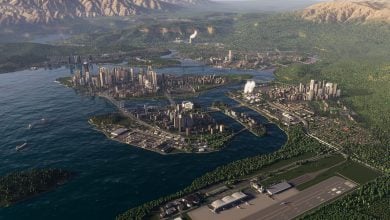Constructing various structures in Cities Skylines 2 brings enjoyment, yet it can deplete your city’s finances rapidly. To counter the expenses, consider exporting surplus resources, like water. If you are keen on generating revenue from the excess water your city generates, learning how to export water in Cities Skylines 2 is a great way to go about it.
- Exporting water in Cities Skylines 2 is a game-changing feature that allows you to generate revenue from excess water production.
- Steps to Export Water:
- Expand your city’s territory by achieving Milestones, which grants you Expansion Permits.
- Access Map View by clicking the Map icon or pressing M.
- Identify the nearest map edge and acquire all tiles leading to it.
- Connect a water pipeline from your network to the map’s edge for external sales.
- You can link pipes to any map edge point via any square to sell surplus water.
How To Export Water

To export water for sale to neighboring towns in Cities Skylines 2, establish a water pipeline that extends from your network to the border of the map.
Here is the step-by-step process:
- Expand your city’s territory by achieving Milestones.
- Achieve this through strategic placement of assets, district expansion, and increasing your city’s population.
- At Milestone 5: Tiny Town, you’ll have 25 Expansion Permits, allowing expansion to the map’s edge.
- Access Map View via the Map icon or M key.
- Find the nearest map edge.
- Obtain all tiles between your city and the chosen map edge.
- Connect a water pipeline from your network to the map’s edge to enable automatic surplus water sales.
- Note the two-way arrow symbols along the map’s perimeter, indicating outside connections.
- Connecting pipes to any point along the map’s edge allows you to sell excess water.

To check the quantity of water you’re exporting, just click on the Water & Sewage icon located in the middle of the toolbar at the screen’s bottom. Beneath the Water Trade status bar, you’ll find details on the amount of water you are exporting. This information will include the number of gallons exported each month.
Producing Water

In Cities Skylines 1, providing water for your citizens involved placing water pumps along the banks of rivers and lakes.
- These structures extracted a set amount of water, which was either consumed by your city or wasted.
- To meet the growing demand, you had to continually expand and add more pumps, a similar scenario applied to sewage management.
Cities Skylines 2 takes a different approach:
- Firstly, it introduces the Groundwater Pumping Station, a highly appreciated addition that allows you to draw water from underground aquifers.
- Cities Skylines 2 also provides an option for dealing with surplus water production.
- You can now export and sell water that currently serves no purpose.
- An additional convenience in Cities Skylines 2 is that you no longer need to lay water pipes throughout your city.
- All roads connected to the network automatically handle the distribution of power, water, and sewage.
This improvement greatly enhances the quality of life for players, eliminating the need to plan grids above and below ground meticulously. An exception to this new rule arises when you intend to export water.
How To Import Water

One of the standout features in Cities Skylines 2 is the absence of an immediate need to construct service buildings like power plants and pumping stations when initiating your city. This is a valuable cost-saving advantage in the early stages.
Here is how to import water in Cities Skylines 2:
- Begin by following the same process detailed for exporting water.
- Dismantle enough pumping stations to lower local water production.
- This decision prompts your city to turn to external sources for its water needs.
To track the amount of water you are importing, simply check the same screen that displays the data on your water exports.
Next Up:
- Cities Skylines 2 How To Rotate Buildings
- Cities Skylines 2 Best Settings
- Cities Skylines 2 How To Dezone An Area
- Cities Skylines 2 Not Enough Customers Solved
Thanks! Do share your feedback with us. ⚡
How can we make this post better? Your help would be appreciated. ✍



